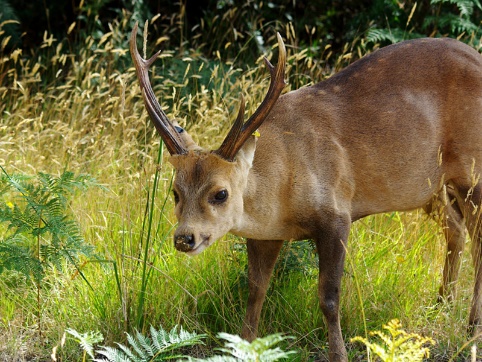





Disclaimer: Copyright infringement not intended.
Context
Hog Deer
Characteristics:
Habitat and Distribution:
Behavior and Diet:
Conservation Status:
Conservation Measures:
Human-Wildlife Conflict:
Cultural Significance:
Rajaji Tiger Reserve
Location:
Establishment:
Biodiversity:
Connectivity:
Conservation Significance:
Human-Wildlife Conflict:
Tourism:
Conclusion:
|
PRACTICE QUESTION Question: Which of the following characteristics accurately describes the Hog Deer (Axis porcinus), a species native to South and Southeast Asia?
Answer: Select the correct statement from the options below: A. Only 1 B. Only 2 C. Only 3 D. Only 4 E. None of the above Correct Answer: E. None of the above Explanation: Option 1 is incorrect because Hog Deer typically have a reddish-brown coat with distinct white spots, not a predominantly black coat. Option 2 is incorrect as adult Hog Deer typically weigh between 50 to 150 kg, and they are not one of the largest deer species. Option 3 is incorrect because Hog Deer do not exhibit bipedal locomotion; they move on all four legs like other deer species. Option 4 is incorrect because Hog Deer populations are found in South and Southeast Asia, not in the arid regions of Central Asia. Therefore, the correct answer is E. None of the above, as none of the statements accurately describes the characteristics of Hog Deer. PRACTICE QUESTION Match the Following:
Top of Form Options: A. 1-B, 2-A, 3-C, 4-D B. 1-A, 2-C, 3-B, 4-D C. 1-C, 2-A, 3-B, 4-D D. 1-A, 2-B, 3-C, 4-D Answer: B. 1-A, 2-C, 3-B, 4-D Explanation:
Therefore, the correct match is 1-A, 2-C, 3-B, 4-D. |







© 2025 iasgyan. All right reserved